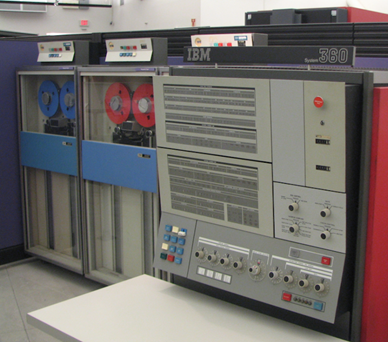eDiscovery Daily Blog
eDiscovery Throwback Thursdays – The Way We Worked, circa 1980

In the late 1970s and early 1980s, the business world looked very different than it does today, and the field of litigation support looked very different than it does today. Let me paint a picture for you…
- Mainframe and mini computers were in use in many large and some mid-sized businesses. They were, however, ‘back-office’ functions. You didn’t see computers on office desks. A few desks did have computer terminals, but not many. Disk drives with a capacity measured in the low hundreds of megabytes were the size of washing machines.
- Although precursors to the internet were in early stages, only ‘computer geeks’ knew about it (and there weren’t that many computer geeks).
- For the most part, law firms – even very large firms – did not have internal litigation support database tools. Litigation databases were stored and accessed on the mainframe computers of service providers, which offered ‘time-share’ services. Typically, those service providers charged a monthly storage fee based on the size of a database, and a per-hour charge for usage.
- The timeshare databases were accessed with computer terminals – also called ‘dumb’ terminals. Those terminals did not have screens. Rather, you inserted a roll of thermal paper, which was ‘spit-out’ with search results (you always needed an ample supply of paper rolls so you weren’t in a bind when the paper ran out during a search session). You hooked a telephone receiver to an acoustic coupler on the terminal, dialed the computer’s phone number, waited for the high-pitched, scratchy screech that indicated a successful connection, and then queried the database.
- Databases consisted primarily of “coded” information like dates, authors, recipients, titles, and so on. Many databases included ‘subject coding’. There were no images included in litigation databases back then, and including full text didn’t get legs in the litigation support world until the mid to late 1980s.
- Database search engines did not provide WYSIWYG interfaces or menu options. You entered precise search commands like “Find Author=Smith-JA and Type=Letter”.
- Most law firms did not have litigation support professionals on staff. That work was handled by service providers.
- Those service providers offered, for the most part, document coding services. There were only a handful of service providers, and those providers offered services nationally. When I took my first vendor job (in 1980), we had 5 main competitors and found ourselves all bidding on the same jobs. The litigation support community was small, and we pretty much all knew each other.
- No one, and I mean NO ONE, outside of our world understood what we did for a living. On more than one occasion I heard my mother proudly explaining to a friend that I was a computer programmer.
And that’s how it was, back when I first started in this field. In the posts to come, I’m going to give more detail on some of these points as we move on to discuss how databases were built, and how searching / retrieval worked.
Please let us know if there are eDiscovery topics you’d like to see us cover in eDiscoveryDaily.
Disclaimer: The views represented herein are exclusively the views of the author, and do not necessarily represent the views held by CloudNine Discovery. eDiscoveryDaily is made available by CloudNine Discovery solely for educational purposes to provide general information about general eDiscovery principles and not to provide specific legal advice applicable to any particular circumstance. eDiscoveryDaily should not be used as a substitute for competent legal advice from a lawyer you have retained and who has agreed to represent you.
